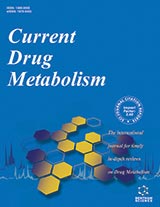Abstract
Medication errors have been increasingly recognized as a major cause of iatrogenic illness and system-wide improvements have been the focus of prevention efforts. Critically ill patients are particularly vulnerable to injury resulting from medication errors because of the severity of illness, need for high risk medications with a narrow therapeutic index and frequent use of intravenous infusions. Health information technology has been identified as a method to reduce medication errors as well as improve the efficiency and quality of care; however, few studies regarding the impact of health information technology have focused on patients in the intensive care unit. Computerized physician order entry and clinical decision support systems can play a crucial role in decreasing errors in the ordering stage of the medication use process through improving the completeness and legibility of orders, alerting physicians to medication allergies and drug interactions and providing a means for standardization of practice. Electronic surveillance, reminders and alerts identify patients susceptible to an adverse event, communicate critical changes in a patients condition, and facilitate timely and appropriate treatment. Bar code technology, intravenous infusion safety systems, and electronic medication administration records can target prevention of errors in medication dispensing and administration where other technologies would not be able to intercept a preventable adverse event. Systems integration and compliance are vital components in the implementation of health information technology and achievement of a safe medication use process.
Keywords: Technology, intensive care unit, patient safety, medication
Current Drug Safety
Title: Technology Utilization to Prevent Medication Errors
Volume: 5 Issue: 1
Author(s): Allison Forni, Hanh T. Chu and John Fanikos
Affiliation:
Keywords: Technology, intensive care unit, patient safety, medication
Abstract: Medication errors have been increasingly recognized as a major cause of iatrogenic illness and system-wide improvements have been the focus of prevention efforts. Critically ill patients are particularly vulnerable to injury resulting from medication errors because of the severity of illness, need for high risk medications with a narrow therapeutic index and frequent use of intravenous infusions. Health information technology has been identified as a method to reduce medication errors as well as improve the efficiency and quality of care; however, few studies regarding the impact of health information technology have focused on patients in the intensive care unit. Computerized physician order entry and clinical decision support systems can play a crucial role in decreasing errors in the ordering stage of the medication use process through improving the completeness and legibility of orders, alerting physicians to medication allergies and drug interactions and providing a means for standardization of practice. Electronic surveillance, reminders and alerts identify patients susceptible to an adverse event, communicate critical changes in a patients condition, and facilitate timely and appropriate treatment. Bar code technology, intravenous infusion safety systems, and electronic medication administration records can target prevention of errors in medication dispensing and administration where other technologies would not be able to intercept a preventable adverse event. Systems integration and compliance are vital components in the implementation of health information technology and achievement of a safe medication use process.
Export Options
About this article
Cite this article as:
Forni Allison, Chu T. Hanh and Fanikos John, Technology Utilization to Prevent Medication Errors, Current Drug Safety 2010; 5 (1) . https://dx.doi.org/10.2174/157488610789869193
| DOI https://dx.doi.org/10.2174/157488610789869193 |
Print ISSN 1574-8863 |
| Publisher Name Bentham Science Publisher |
Online ISSN 2212-3911 |
 85
85
- Author Guidelines
- Bentham Author Support Services (BASS)
- Graphical Abstracts
- Fabricating and Stating False Information
- Research Misconduct
- Post Publication Discussions and Corrections
- Publishing Ethics and Rectitude
- Increase Visibility of Your Article
- Archiving Policies
- Peer Review Workflow
- Order Your Article Before Print
- Promote Your Article
- Manuscript Transfer Facility
- Editorial Policies
- Allegations from Whistleblowers
Related Articles
-
Antiangiogenic Therapy in Malignant Glioma: Promise and Challenge
Current Pharmaceutical Design Beta-Adrenergic Antagonists: Indications and Potential Immunomodulatory Side Effects in the Critically Ill
Current Medicinal Chemistry Overview of Angiogenesis and the use of Bevacizumab in Patients with Malignant Gliomas
Current Signal Transduction Therapy An Overview of the Design, Development and Applications of Biodegradable Stents
Drug Delivery Letters Large Porous Hollow Particles: Lightweight Champions of Pulmonary Drug Delivery
Current Pharmaceutical Design Current Drug Targets and Future Therapy of Pulmonary Arterial Hypertension
Current Medicinal Chemistry Vasoconstrictor Therapy for Hepatorenal Syndrome in Liver Cirrhosis
Current Pharmaceutical Design L-Carnitine - Metabolic Functions and Meaning in Humans Life
Current Drug Metabolism Pathogenesis of Diabetic Retinopathy and Diabetic Macular Edema and Enzyme Inhibition
Current Enzyme Inhibition Hydrogels: A Journey from Diapers to Gene Delivery
Mini-Reviews in Medicinal Chemistry Multimodality Imaging in Acute Ischemic Stroke
Current Medical Imaging Role of Old Antibiotics in Multidrug Resistant Bacterial Infections
Current Drug Targets Age-related Vascular Differences among Patients Suffering from Multiple Sclerosis
Current Neurovascular Research The Clinical Spectrum of Nephrogenic Systemic Fibrosis
Current Rheumatology Reviews Vitamin-D Receptor (VDR) Gene Polymorphisms (TaqI, FokI) in Turkish Patients with Hashimoto’s Thyroiditis: Relationship to the Levels of Vit-D and Cytokines
Endocrine, Metabolic & Immune Disorders - Drug Targets Serum Endocan, Neuron-Specific Enolase and Ischemia-Modified Albumin Levels in Newborns with Partial Blood Exchange Transfusion
Combinatorial Chemistry & High Throughput Screening Human Serum Albumin Conjugated Biomolecules for Cancer Molecular Imaging
Current Pharmaceutical Design Ischemic and Oxidative Damage to the Hypothalamus May Be Responsible for Heat Stroke
Current Neuropharmacology Erythropoietin and mTOR: A “One-Two Punch” for Aging-Related Disorders Accompanied by Enhanced Life Expectancy
Current Neurovascular Research Noninvasive Monitoring of Intracranial Pressure
Recent Patents on Biomedical Engineering (Discontinued)


























